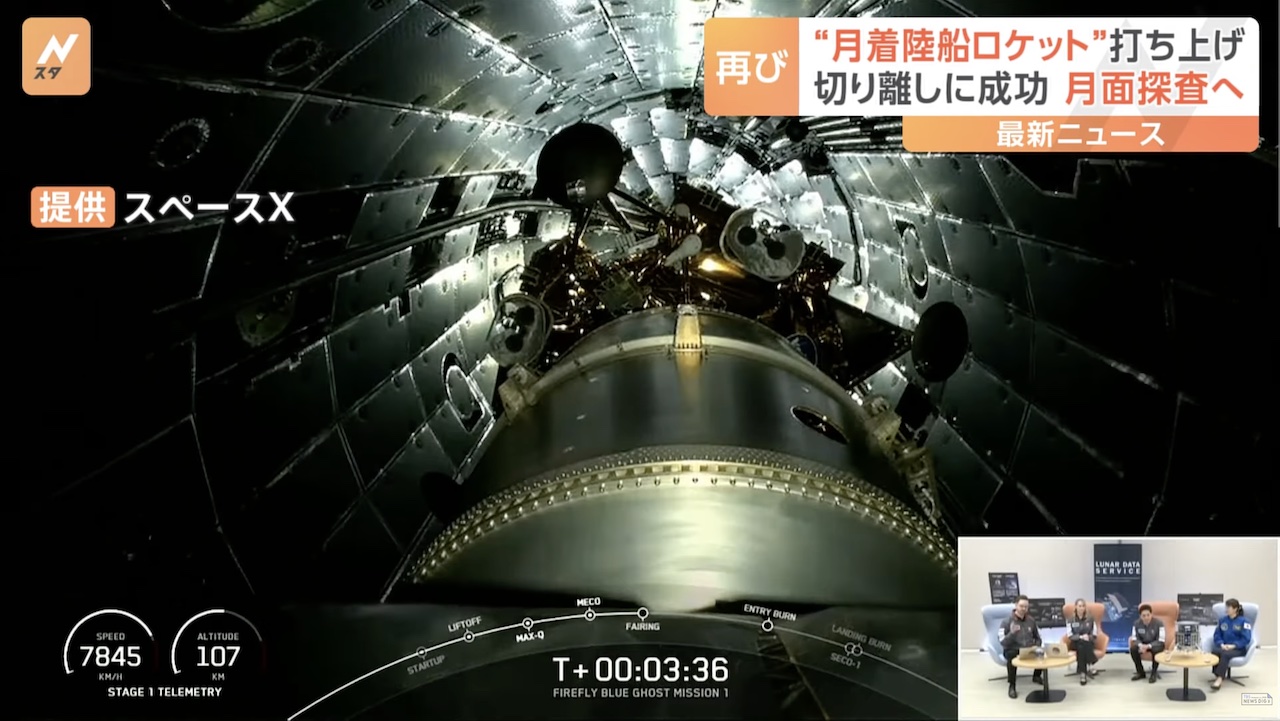FLORIDA, Jan 16 (News On Japan) - A rocket carrying the lunar lander developed by Japanese space venture ispace was successfully launched from the Kennedy Space Center in the United States.
The launch took place shortly after 3 p.m. Japan time aboard a SpaceX rocket, which successfully separated from the lunar lander shortly afterward.
Ispace plans to attempt a lunar landing between late May and early June this year as part of its lunar exploration mission.
In April two years ago, an earlier attempt to land on the Moon ended in failure. This time, the lunar lander has been named "Resilience" to symbolize "recovery" and "rebirth."
Although a U.S. company achieved a privately funded lunar landing in February last year, if "Resilience" succeeds, it will mark the first such accomplishment by a domestic private company.
Source: TBS
















